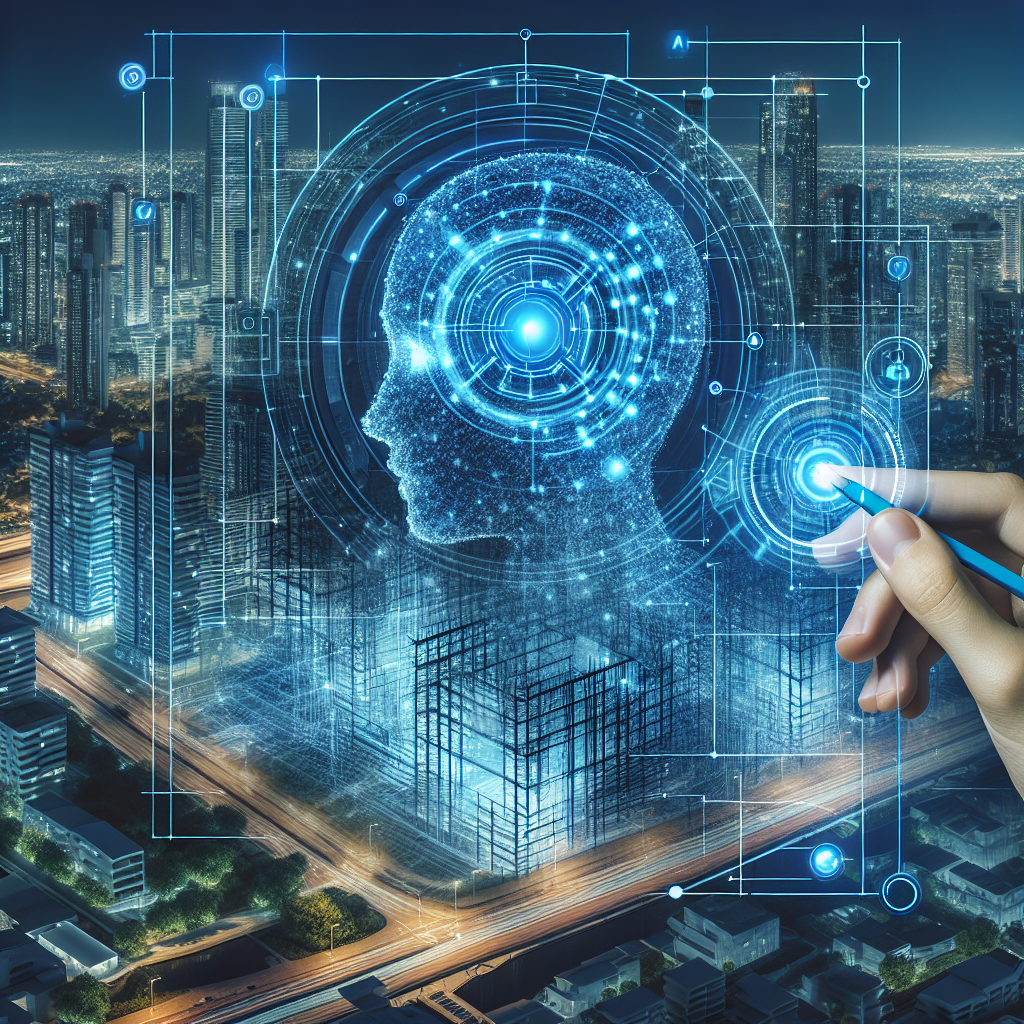The Future of Architecture: How AI is Transforming the Industry
Architecture has always been a field that requires a delicate balance between creativity and technical expertise. Designing buildings that are not only aesthetically pleasing but also functional and structurally sound is a complex task that has traditionally relied heavily on the expertise of architects and engineers. However, with the rapid advancements in artificial intelligence (AI) technology, the architecture industry is undergoing a transformation that is revolutionizing the way buildings are designed, constructed, and even maintained.
AI has the potential to revolutionize architecture in several ways. From streamlining the design process to optimizing building performance, AI is changing the way architects work and pushing the boundaries of what is possible in the field.
One of the most significant ways AI is transforming architecture is through the use of generative design. Generative design is a process that uses algorithms to explore a vast range of possible design solutions based on a set of parameters and constraints. By harnessing the power of AI, architects can quickly generate and evaluate hundreds or even thousands of design options, allowing them to explore new ideas and uncover innovative solutions that may not have been possible through traditional design methods.
Generative design also enables architects to optimize building performance by taking into account factors such as energy efficiency, structural integrity, and sustainability. By simulating how different design choices will impact a building’s performance, architects can make more informed decisions that lead to buildings that are not only visually striking but also environmentally friendly and cost-effective.
AI is also revolutionizing the construction process itself. By using AI-powered robots and drones, construction companies can automate tasks such as site surveying, material delivery, and even bricklaying. This not only speeds up the construction process but also improves safety and reduces the risk of human error. AI can also help optimize building maintenance by using sensors and predictive analytics to monitor a building’s performance in real-time, allowing for proactive maintenance and reducing the risk of costly repairs.
In addition to improving efficiency and performance, AI is also democratizing the field of architecture by making design tools more accessible to a wider range of people. With the rise of AI-powered design software, anyone with a computer and an internet connection can now create 3D models and explore different design options, democratizing the design process and allowing for greater collaboration and innovation within the industry.
While AI holds tremendous potential to transform the architecture industry, it also raises new challenges and ethical considerations. For example, as AI becomes increasingly integrated into the design process, there is a concern that it may replace the need for human architects altogether. While AI can certainly augment and enhance the work of architects, it is unlikely to replace the creativity and intuition that human designers bring to the table.
Another concern is the potential for bias in AI algorithms. If AI is trained on data that is biased or incomplete, it may produce designs that perpetuate existing inequalities or fail to consider the needs of marginalized communities. It is crucial for architects and AI developers to be mindful of these issues and work towards creating more inclusive and equitable design solutions.
Despite these challenges, the future of architecture looks bright with the integration of AI technology. By leveraging the power of AI to streamline the design process, optimize building performance, and democratize the field of architecture, architects can unlock new possibilities and create buildings that are not only visually stunning but also sustainable, efficient, and responsive to the needs of the communities they serve.
FAQs
Q: Will AI replace human architects?
A: While AI has the potential to augment and enhance the work of architects, it is unlikely to replace the need for human designers altogether. AI can assist architects in generating design options and optimizing building performance, but it cannot replace the creativity, intuition, and critical thinking skills that human architects bring to the table.
Q: How can AI improve building performance?
A: AI can improve building performance by simulating how different design choices will impact factors such as energy efficiency, structural integrity, and sustainability. By using AI to evaluate and optimize building performance, architects can make more informed decisions that lead to buildings that are environmentally friendly, cost-effective, and efficient.
Q: What are the ethical considerations of using AI in architecture?
A: One of the main ethical considerations of using AI in architecture is the potential for bias in AI algorithms. If AI is trained on biased or incomplete data, it may produce designs that perpetuate existing inequalities or fail to consider the needs of marginalized communities. It is crucial for architects and AI developers to be mindful of these issues and work towards creating more inclusive and equitable design solutions.
Q: How can AI democratize the field of architecture?
A: AI can democratize the field of architecture by making design tools more accessible to a wider range of people. With the rise of AI-powered design software, anyone with a computer and an internet connection can now create 3D models and explore different design options, allowing for greater collaboration and innovation within the industry.

